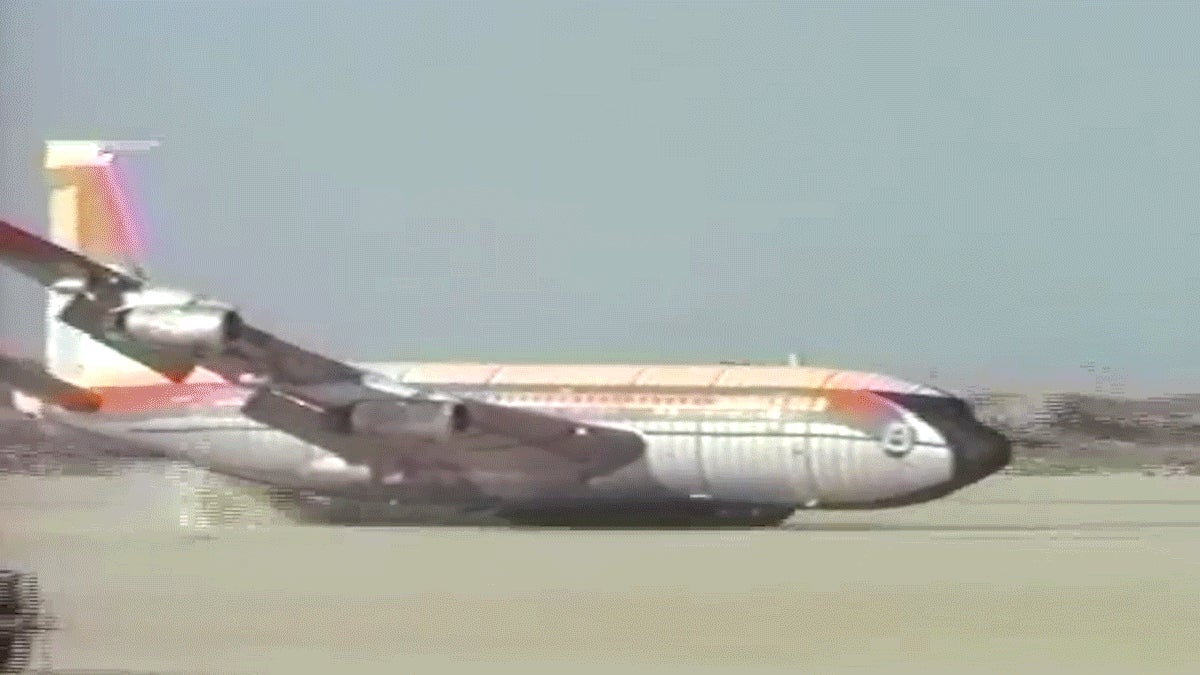Planes used to get crash tests, too. Here's what they looked like
Plenty of aircraft have been smashed into flaming heaps in the name of safety

Just like the cars out on the road, regulators intentionally crashed planes for 75 years to better learn how to better design aircraft for increase occupant survivability. However, every new plane model can’t be slammed into terrain for a star rating as if it were a new crossover bound for a showroom. Full-scale test crashes were done sparingly with specific goals in mind and are essentially extinct today.
The practice of aircraft crash testing first got off the ground after World War II. The number of commercial airline passengers rose rapidly in the late 1940s and 1950s. Federal regulators, aircraft manufacturers and airlines wanted to ensure that the increasing number of flights were as safe as reasonably possible. According to NASA, the first full-scale crashes were carried out in 1949 on the grounds of a U.S. Army arsenal. Heavily-used cargo planes from the Berlin Airlift went down a runway into choreographed crashes via remote control. The test were done in the hope of learning how to mitigate crash fires.
The initial goal of crash testing was discovering how fires start during crashes and plane fuselages broke apart during impact, and that mission evolved as the industry entered the Jet Age:
2 / 11
1964 - Douglas DC-7
The Federal Aviation Administration set up an obstacle course to crash planes through at Deer Valley Airport in Phoenix, Arizona in the 1960s. Researchers wanted to simulate as many types of impacts as possible in a single crash.
3 / 11
1964 - Lockheed Constellation
As in earlier research, the FAA strongly believed that fire was a significant factor in plane crashes it could work to mitigate. The test manager believed that 80 to 90 percent of passengers would have survived the Lockheed Constellation’s crash run if there was no fire, the New York Times reported.
4 / 11
1984 - Boeing 720
NASA partnered with the FAA in 1984 to organize the Controlled Impact Demonstration. The test featured a remote-controlled Boeing 720 flown into steel structures installed in the Rogers Dry Lake at Edwards Air Force Base. It took four years of preparations to create crash parameters that the FAA considered survivable.
5 / 11
1988 - McDonnell Douglas F-4 Phantom
Sandia National Laboratories decided to strap five rockets to an F-4 Phantom fighter jet and sling it at a concrete wall just four years later. The lab wanted to measure the impact force. The jet hit the target at 480 miles per hour.
6 / 11
2011 - Orion MPCV
NASA’s Landing and Impact Research Facility was originally established for Apollo program testing in the 1960s. The site features a massive gantry key used to drop aircraft from as high as 200 feet. The same facility was used to test the Orion spacecraft that the Artemis program will use to return to the Moon.
7 / 11
2012 - Boeing 727
Discovery operated its own full-scale crash test in 2012 using a former Singapore Airlines Boeing 727. The made-for-tv experiment was conducted on the massive dry lake bed of Laguna Salada in Mexico.
8 / 11
2014 - Boeing Vertol CH-46 Sea Knight
The Landing and Impact Research Facility is used to crash a wide variety of aircraft. While the full-scale drop tests might not be a dramatic as smashing a plane into a lake bed, researcher are far better able to control variables and observe tests.
9 / 11
2015 - Cessna 172
General aviation planes are likely the most common type of aircraft drop-tested at the Landing and Impact Research Facility. This Cessna 172 test was conducted to see if emergency locator transmitters could be better installed onboard.
10 / 11
2016 - Boeing Starliner
Yes, the Boeing Starliner was tested at the NASA facility. The space agency will hopefully be splashing down the spacecraft in an ocean in the near future or two astronauts will be waiting on the International Space Station until 2025 to return to Earth.
11 / 11
2019 - Fokker F-28
NASA still drop tests commercial aircraft at the site. The data gathered from dummies will be used to see how actually passengers would hold up in a plane crash. Researchers can then come up with ideas on how to improve the chance of survival and reduce injuries.
